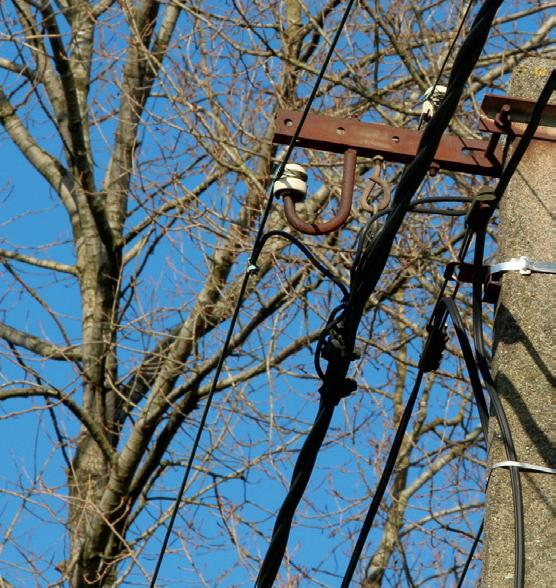
2 minute read
Tree trimming serviceimproves for all
As I am writing this article, it has been another long weekend of outage restoration for Adams Rural Electric’s lineworkers and tree trimmers. It seems that the cooperative is experiencing more weather-related outages due to storms and strong winds that bring trees down onto power lines.
One of the things I love best about our community is the natural landscape that surrounds us. We are fortunate to have so many trees that offer beauty, shade, and a habitat for all sorts of birds and other wildlife. I know that you appreciate our community for many of the same reasons. At Adams Rural Electric, we strive to balance maintaining natural surroundings and ensuring a reliable power supply by keeping power line rights-ofway (ROW) clear.
While we recognize and appreciate the loveliness of trees, we also know the importance of trimming those trees when they’re in ROW areas. Before touching on the three main benefits of ROW management, let me explain what a “right-of-way” is and how it may affect you. A right-of-way is the land we use to construct, maintain, replace, or repair underground and overhead power lines. Adams Rural Electric has a 40 -foot rightof-way for our power lines, which includes 20 feet on each side of the lines. Rights-of-way enable the co-op to provide clearance from trees and other obstructions that could hinder power line installation, maintenance, or operation. Adams Rural Electric must be able to maintain the power lines above and below the ROW. The overall goal of our right-of-way management program is to provide reliable power to our members while maintaining the beauty of our community. Proactive right-of-way management benefits co-op members in three tangible ways:
Safety
First and foremost, we care about our members and put their safety and that of our lineworkers and tree trimmers above all else. Overgrown vegetation and trees pose a risk to power lines. For example, if trees are touching power lines in our members’ yards, they can pose grave danger to families. If children can access those trees, they can potentially climb into a danger zone. Electricity can arc, or jump, from a power line to a nearby conductor like a tree. A proactive approach also diminishes the chances of fallen branches or trees, which make it more complicated and dangerous for lineworkers to restore power during severe weather events.
Reliability

Of course, one of the biggest benefits of a smart rightof-way management program is reliability. Strategic tree trimming reduces the frequency of downed lines causing power outages. Generally speaking, healthy trees don’t fall on power lines, and clear lines don’t cause problems. Proactive trimming and pruning keeps lines clear to promote reliability. 1144500013

Affordability
As you know, Adams Rural Electric is a not-for-profit cooperative, and that means we strive to keep our costs in check in order to keep our rates affordable. This extends to our approach to right-of-way management. If trees grow too close to power lines, the potential for expensive repairs also increases. Effective tree trimming and other right-of-way management efforts keep costs down for everyone.
Our community is a special place. We appreciate the beauty trees provide, but we also know our community depends on us to provide reliable energy. Please help us by not planting trees under power lines or in the right-of-way. If you do have a tree growing into the lines, please call the office to start an order to have our tree trimmers cut or remove the tree safely. Never try to remove a tree in or near the electric line right-of-way. Our employees are trained to do this in a safe manner. Through right-of-way management, we are better able to keep the power lines clear, prepare for future weather events, and secure the reliability of the grid.










